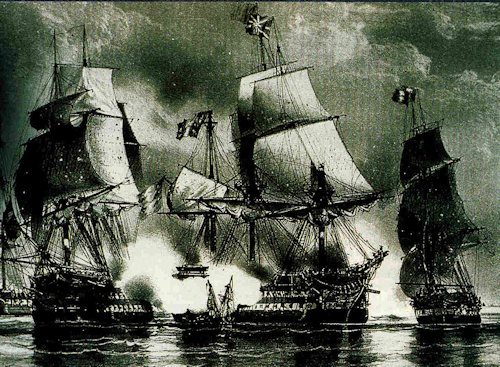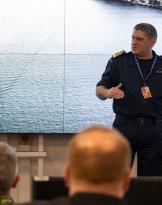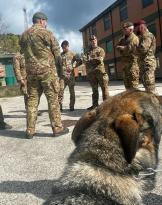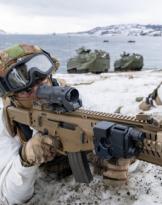Ship Antaeus, unity with the dependence of Diving and Inshore Pools "Teseo Tesei" (Comsubin) last June launched a naval campaign from the Port of Messina to conduct underwater operations in favor of some departments and public bodies.
A research and investigation activity started yesterday in favor of the Ministry of Cultural Heritage and Activities and Tourism (MIBACT) in the waters off Finale Ligure, on a wreck found at the beginning of the year. They are the remains of the famous naval battle of March 1795, the first victory of the then captain and future Admiral Horatio Nelson, in command of the 64-gun vessel HMS Agamemnon.
Through the SRV 300 minisubmarine, the wire-guided vehicles supplied to the unit and the dives of the Comsubin divers of the Navy, an accurate inspection of the area is underway aimed at identifying the wreck and acquiring the necessary elements to evaluate a future underwater intervention. in favor of the Superintendency of Liguria.
Today the archaeological site is protected thanks to a specific ordinance issued by the Harbor Office of Savona which prohibits any underwater activity with the exception of technical diving expressly authorized by the aforementioned Superintendency.

The important research activity in the deep sea that for some years has seen the Navy and the Mibact engaged is aimed at identifying and documenting deep wrecks, which in addition to enriching the archaeological knowledge on boats and commercial traffic of ancient times, medieval and modern and allows the experimentation and development of new and innovative underwater investigation tools.
Note: The materials found during the discovery of the wreck, which took place in February of the 2016, are bronze guns of French production dating from the eighteenth and nineteenth centuries, rare military rifles in use by the crews of the French revolutionary navy and similar objects in use at the marine of the time.
It is probable that the material constitutes part of the war equipment of two French ships, the Ca Ira , censeur, the first seed destroyed and then captured and the second date burned by the British.
According to Vincenzo Tinè, archeology superintendent of Liguria, "this discovery is of exceptional interest, both archaeological and historical. Ligurian underwater archeology is once again at the forefront of exploration, bringing to light the remains of the Battle of Noli and then returning a fundamental piece to the history of Liguria and Europe ".
 La Battle of Noli it was inserted at the beginning of the Napoleonic war period, fought in the Ligurian Sea. At the beginning of March 1795, the French sailed from Toulon towards Corsica but were joined by the English, stationed in Livorno, who engaged in battle. The British avant-garde consists of the frigate Inconstant and by 'Agamemnon of Nelson who manage to cross the French vessel Ca Ira, left behind because in the night he had dismasted. The two English ships open fire on the French enemy, who the next day, badly damaged, is towed by the censeur. The two units thus become easy targets for the British: the 14 March of the 1795 Nelson engages the battle of Capo Noli bravely attacking the French upper class ship Ca Ira, preventing the landing of French troops in Corsica.
La Battle of Noli it was inserted at the beginning of the Napoleonic war period, fought in the Ligurian Sea. At the beginning of March 1795, the French sailed from Toulon towards Corsica but were joined by the English, stationed in Livorno, who engaged in battle. The British avant-garde consists of the frigate Inconstant and by 'Agamemnon of Nelson who manage to cross the French vessel Ca Ira, left behind because in the night he had dismasted. The two English ships open fire on the French enemy, who the next day, badly damaged, is towed by the censeur. The two units thus become easy targets for the British: the 14 March of the 1795 Nelson engages the battle of Capo Noli bravely attacking the French upper class ship Ca Ira, preventing the landing of French troops in Corsica.
At the end of the furious fight, the French fleet departs leaving the censeur, set on fire by the British, while the Ca Ira, reduced to a pontoon with 3 meters of water in the hold, it is captured.
It is the first important victory of Captain Nelson, future admiral and national hero of England; this is the clash between the two largest and marine powers of the time, of which the remains discovered off Capo Noli could represent one of the final results of the battle. In fact, the arrangement on the seabed and the type of artillery, together with the numerous muskets supplied by the French navy at the end of the 18th century, represents a new and concrete hypothesis: it is probably the wreck of an armed boat fleeing the battle.
(photo: Marina Militare / web)












